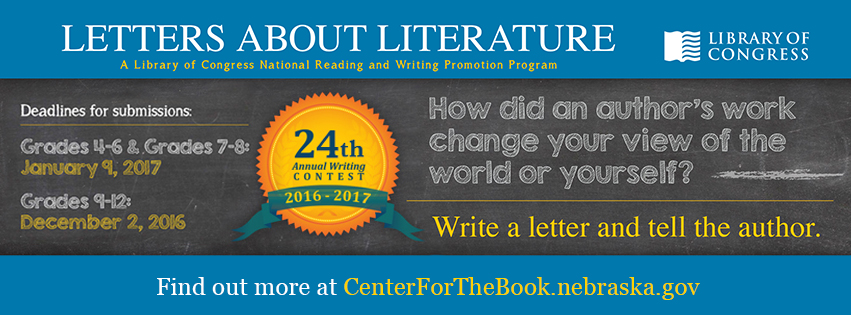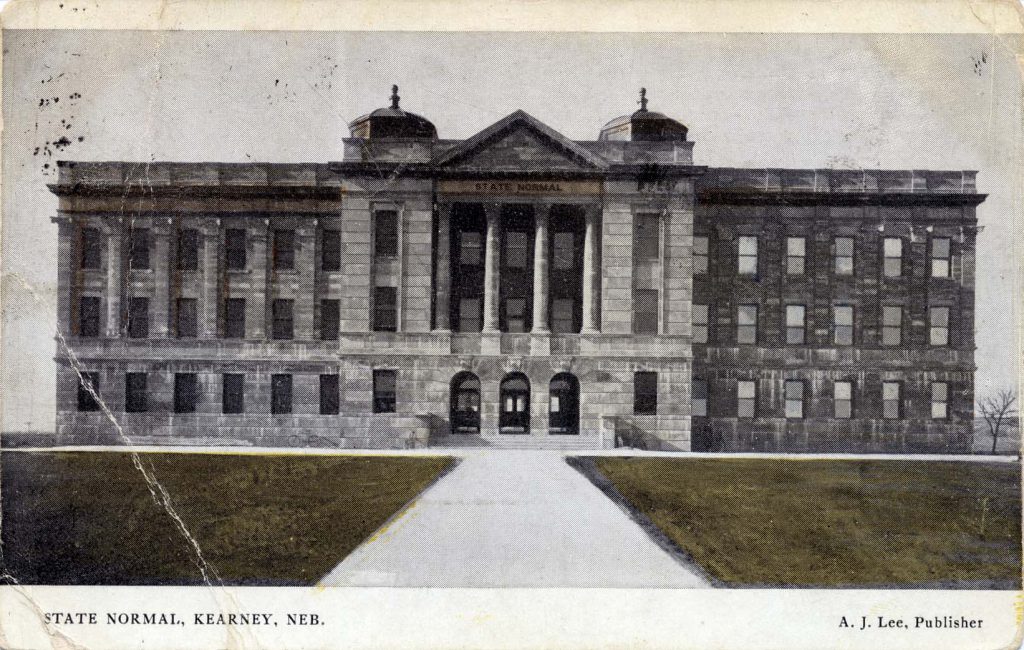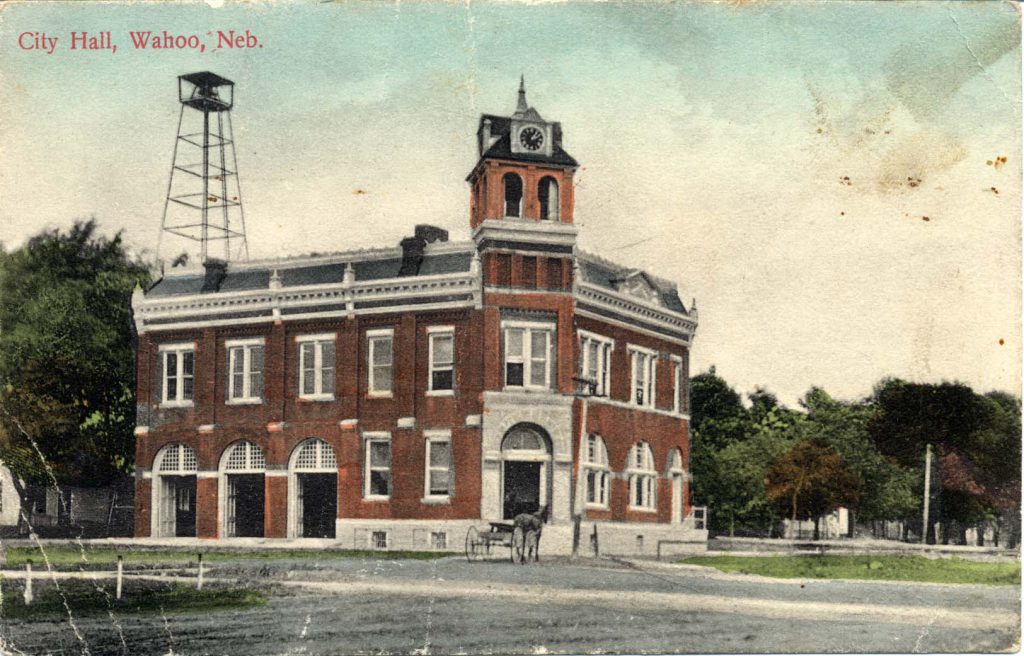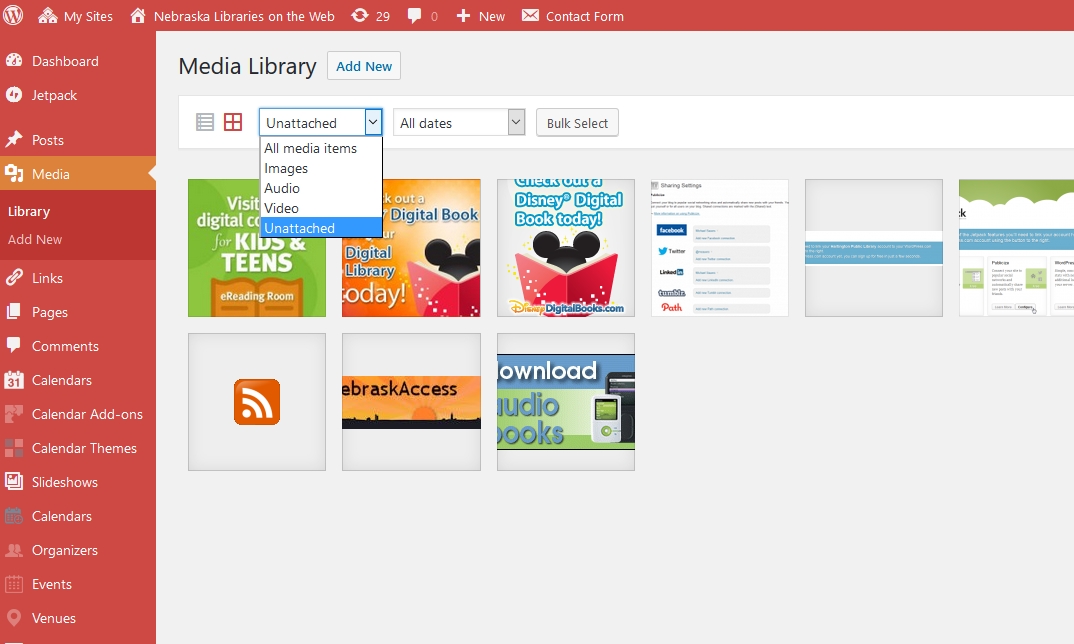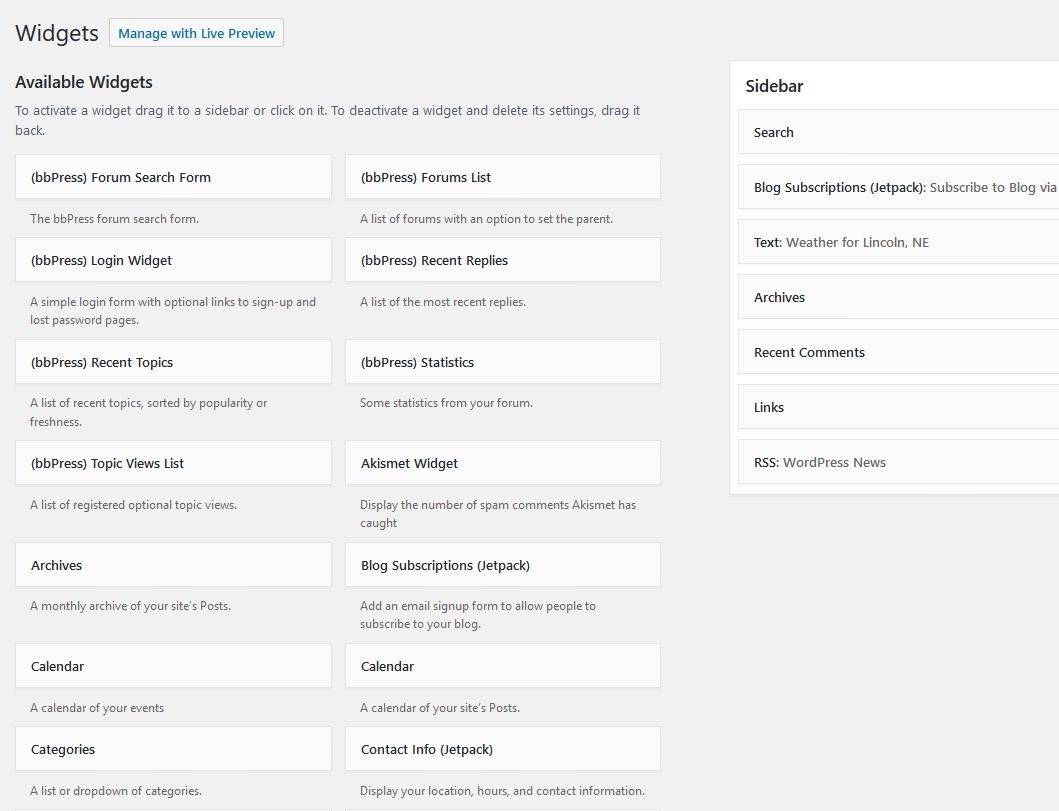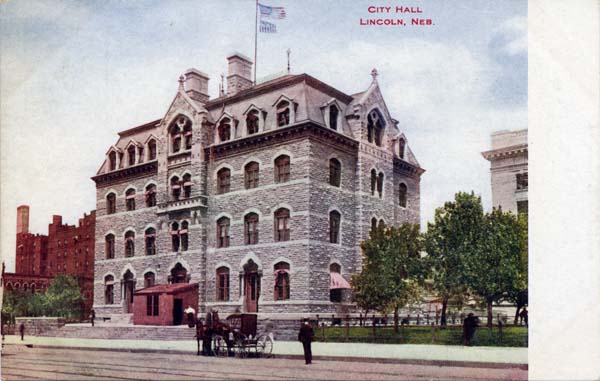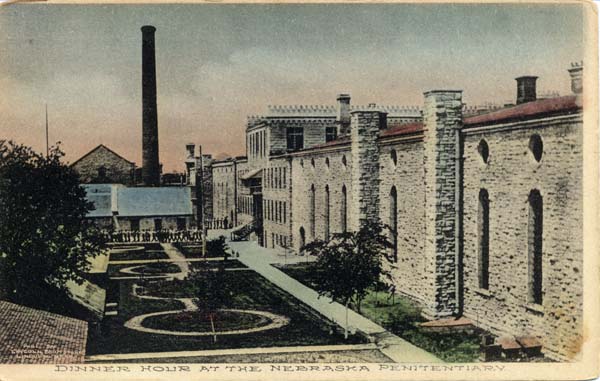Search the Blog
Categories
- Books & Reading
- Broadband Buzz
- Census
- Education & Training
- Friday Reads
- General
- Grants
- Information Resources
- Library Management
- Nebraska Center for the Book
- Nebraska Libraries on the Web
- Nebraska Memories
- Now hiring @ your library
- Preservation
- Pretty Sweet Tech
- Programming
- Public Library Boards of Trustees
- Public Relations
- Talking Book & Braille Service (TBBS)
- Technology
- Uncategorized
- What's Up Doc / Govdocs
- Youth Services
Archives
Subscribe
Category Archives: General
Young Readers Invited to Write to Favorite Authors
FOR IMMEDIATE RELEASE: 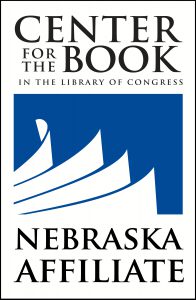
September 12, 2016
FOR MORE INFORMATION:
Mary Jo Ryan
402-471-3434
800-307-2665
Young Readers Invited to Write to Favorite Authors
Young readers in grades 4-12 are invited to write a personal letter to an author for the Letters about Literature (LAL) contest, a national reading and writing promotion program. The letter can be to any author (living or dead) from any genre—fiction or nonfiction, contemporary or classic—explaining how that author’s work changed the student’s view of the world. The 24th annual writing contest for young readers is made possible by a generous grant from the Dollar General Literacy Foundation, with additional support from gifts to the Center for the Book in the Library of Congress, which promotes the contest through its affiliate Centers for the Book, state libraries and other organizations. This reading and writing promotion is sponsored in Nebraska by the Nebraska Center for the Book and Nebraska Library Commission, and supported by Houchen Bindery Ltd. and Chapters Books in Seward.
Prizes will be awarded on both the state and national levels. The Nebraska Center for the Book’s panel of judges will select the top letter writers in the state, to be honored in a proclamation-signing ceremony at the state capitol during National Library Week in April 2017. Their winning letters will be placed in the Jane Pope Geske Heritage Room of Nebraska Authors at Bennett Martin Public Library in Lincoln. Nebraska winners will receive state prizes, and then advance to the national judging.
A panel of national judges for the Center for the Book in the Library of Congress will select one National Winner per competition level (Level I for grades 4-6, Level II for grades 7-8, and Level III for grades 9-12) to receive a $1,000 cash award, to be announced in May 2017. The judges will also select one National Honor winner on each competition level to receive a $200 cash award.
Teachers, librarians, and parents can download free teaching materials on reader response and reflective writing, along with contest details and entry forms, at www.read.gov/letters. Nebraska-specific information (including lists of Nebraska winners of past competitions) is available at http://centerforthebook.nebraska.gov/programs/LAL.html. Get inspired by listening to Nebraska winners, Ashley Xiques and Sydney Kohl, read and talk about and their winning letters to authors that meant something to them in their own lives, see NET Radio’s All About Books (http://netnebraska.org/basic-page/radio/all-about-books). Submissions from Grades 9-12 must be postmarked by December 2, 2016. Submissions from Grades 4-8 must be postmarked by January 9, 2017. For more information contact Mary Jo Ryan, MaryJo.Ryan@nebraska.com, 402-471-3434 or 800-307-2665.
The Nebraska Center for the Book is housed at the Nebraska Library Commission and brings together the state’s readers, writers, booksellers, librarians, publishers, printers, educators, and scholars to build the community of the book, supporting programs to celebrate and stimulate public interest in books, reading, and the written word. The Nebraska Center for the Book is supported by the Nebraska Library Commission.
As the state library agency, the Nebraska Library Commission is an advocate for the library and information needs of all Nebraskans. The mission of the Library Commission is statewide promotion, development, and coordination of library and information services, bringing
###
The most up-to-date news releases from the Nebraska Library Commission are always available on the Library Commission Website, http://nlc.nebraska.gov/publications/newsreleases.
Free Webinar! New STAR_Net Resources for your Library
 Date: Wednesday, September 21
Date: Wednesday, September 21
Time: 1:00-1:30pm MDT (2:00-2:30 CDT, 3:00-3:30 EDT)
Join Anne Holland (Community Engagement Manager at the Space Science Institute) for a “Grand Opening” of the two new websites.
You’ll receive a tour of the new features and resources (available at www.starnetlibraries.org and clearinghouse.starnetlibraries.org) as well as have an opportunity to suggest new features and content.
You’ll also receive information on how to register your library for the 2017 Solar Eclipse, and get some free swag! We will keep this webinar to 30 minutes. See you there!
To register, please click here. Password is “star”.
What’s Up Doc? New State Agency Publications Received at the Library Commission
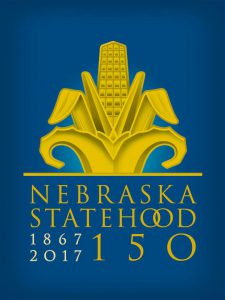 New state agency publications have been received at the Nebraska Library Commission for August 2016. Included are titles from the Nebraska Department of Economic Development, the Nebraska Public Power District, The Nebraska State Historical Society, and the Nebraska Workers’ Compensation Court, to name a few.
New state agency publications have been received at the Nebraska Library Commission for August 2016. Included are titles from the Nebraska Department of Economic Development, the Nebraska Public Power District, The Nebraska State Historical Society, and the Nebraska Workers’ Compensation Court, to name a few.
NLC Staff: Meet Craig Lefteroff
 Meet Craig Lefteroff, who joined the Nebraska Library Commission as our Technology Innovation Librarian a year ago this month. Craig was born in Vicksburg, Mississippi and attended college at Delta State University, in Cleveland, Mississippi, graduating with a BA in English. After graduation, Craig taught English and speech for one year in a Mississippi Delta town with one store and a prison. This experience encouraged Craig to seek new employment, so he moved to Versailles (pronounced ver-say-elles), Kentucky, where he cleaned computers for Walmart. Next up was a job as an accountant for a Holiday Inn in Lexington, Kentucky. This job afforded him some flexibility so, affirming his love for books and literature, he enrolled in library school at the University of Kentucky.
Meet Craig Lefteroff, who joined the Nebraska Library Commission as our Technology Innovation Librarian a year ago this month. Craig was born in Vicksburg, Mississippi and attended college at Delta State University, in Cleveland, Mississippi, graduating with a BA in English. After graduation, Craig taught English and speech for one year in a Mississippi Delta town with one store and a prison. This experience encouraged Craig to seek new employment, so he moved to Versailles (pronounced ver-say-elles), Kentucky, where he cleaned computers for Walmart. Next up was a job as an accountant for a Holiday Inn in Lexington, Kentucky. This job afforded him some flexibility so, affirming his love for books and literature, he enrolled in library school at the University of Kentucky.
Craig’s first professional library job was as a reference librarian at St. Tammany Parish Library north of Lake Pontchartrain after Hurricane Katrina. A tipping point occurred during this chapter of Craig’s life and it was time to try living closer if not north of the Mason-Dixon Line. To fill a job title of Reference and Electronics Librarian, Craig moved to West Virginia to work for the Kanawha City Public Library where he lived at the top of a hill. When Craig was selected by the Nebraska Library Commission, it was a priority to be able to walk to work as this was never a possibility in Elkview.
It is typical for librarians to have eclectic interests and Craig fits this description. He surrounds himself with a variety of people and enjoys movies, music, and reading. Some of Craig’s favorite authors are Thomas Hardy, George Elliot, Herman Melville, Cormac McCarthy, and Mary Roach. A book that Craig has read at least five times is Stoner by John Williams owing to the theme of a young man growing up in the south who falls in love with literature. If money were no issue, he would spend his time reading and traveling first to Italy. When asked what other profession he would like to practice, Craig would be a writer and when I asked him to comment on his associations about his workplace, he responded: food day.
We’re grateful Craig has made the Midwest his home and is willing to share his skills and interests with those of us in Nebraska libraries.
Digitized and Free to Read Online : Archive of 6,000 Historical Children’s Books
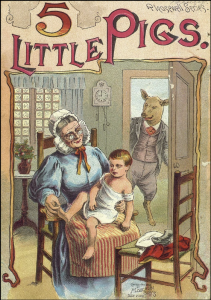 We can learn much about how a historical period viewed the abilities of its children by studying its children’s literature. Occupying a space somewhere between the purely didactic and the nonsensical, most children’s books published in the past few hundred years have attempted to find a line between the two poles, seeking a balance between entertainment and instruction. However, that line seems to move closer to one pole or another depending on the prevailing cultural sentiments of the time. And the very fact that children’s books were hardly published at all before the early 18th century tells us a lot about when and how modern ideas of childhood as a separate category of existence began.
We can learn much about how a historical period viewed the abilities of its children by studying its children’s literature. Occupying a space somewhere between the purely didactic and the nonsensical, most children’s books published in the past few hundred years have attempted to find a line between the two poles, seeking a balance between entertainment and instruction. However, that line seems to move closer to one pole or another depending on the prevailing cultural sentiments of the time. And the very fact that children’s books were hardly published at all before the early 18th century tells us a lot about when and how modern ideas of childhood as a separate category of existence began.
“By the end of the 18th century,” writes Newcastle University professor M.O. Grenby, 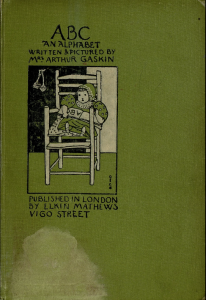 “children’s literature was a flourishing, separate and secure part of the publishing industry in Britain.” The trend accelerated rapidly and has never ceased—children’s and young adult books now drive sales in publishing (with 80% of YA books bought by grown-ups for themselves). Grenby notes that “the reasons for this sudden rise of children’s literature” and its rapid expansion into a booming market by the early 1800s “have never been fully explained.” We are free to speculate about the social and pedagogical winds that pushed this historical change.
“children’s literature was a flourishing, separate and secure part of the publishing industry in Britain.” The trend accelerated rapidly and has never ceased—children’s and young adult books now drive sales in publishing (with 80% of YA books bought by grown-ups for themselves). Grenby notes that “the reasons for this sudden rise of children’s literature” and its rapid expansion into a booming market by the early 1800s “have never been fully explained.” We are free to speculate about the social and pedagogical winds that pushed this historical change.
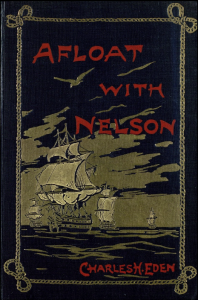 Or we might do so, at least, by examining the children’s literature of the Victorian era, perhaps the most innovative and diverse period for children’s literature thus far by the standards of the time. And we can do so most thoroughly by surveying the thousands of mid- to late 19th century titles at the University of Florida’s Baldwin Library of Historical Children’s Literature. Their digitized collection currently holds over 6,000 books free to read online from cover to cover, allowing you to get a sense of what adults in Britain and the U.S. wanted children to know and believe.
Or we might do so, at least, by examining the children’s literature of the Victorian era, perhaps the most innovative and diverse period for children’s literature thus far by the standards of the time. And we can do so most thoroughly by surveying the thousands of mid- to late 19th century titles at the University of Florida’s Baldwin Library of Historical Children’s Literature. Their digitized collection currently holds over 6,000 books free to read online from cover to cover, allowing you to get a sense of what adults in Britain and the U.S. wanted children to know and believe.
Several genres flourished at the time: religious instruction, naturally, but also language 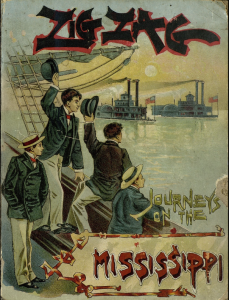 and spelling books, fairy tales, codes of conduct, and, especially, adventure stories—pre-Hardy Boys and Nancy Drew examples of what we would call young adult fiction, these published principally for boys. Adventure stories offered a (very colonialist) view of the wide world; in series like the Boston-published Zig Zag and English books like Afloat with Nelson, both from the 1890s, fact mingled with fiction, natural history and science with battle and travel accounts. But there is another distinctive strain in the children’s literature of the time, one which to us—but not necessarily to the Victorians—would seem contrary to the imperialist young adult novel.
and spelling books, fairy tales, codes of conduct, and, especially, adventure stories—pre-Hardy Boys and Nancy Drew examples of what we would call young adult fiction, these published principally for boys. Adventure stories offered a (very colonialist) view of the wide world; in series like the Boston-published Zig Zag and English books like Afloat with Nelson, both from the 1890s, fact mingled with fiction, natural history and science with battle and travel accounts. But there is another distinctive strain in the children’s literature of the time, one which to us—but not necessarily to the Victorians—would seem contrary to the imperialist young adult novel.
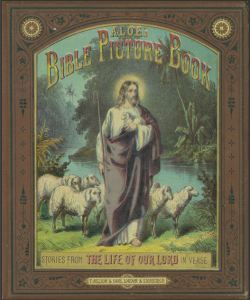 For most Victorian students and readers, poetry was a daily part of life, and it was a central instructional and storytelling form in children’s lit. The A.L.O.E.’s Bible Picture Book from 1871, above, presents “Stories from the Life of Our Lord in Verse,” written “simply for the Lord’s lambs, rhymes more readily than prose attracting the attention of children, and fastening themselves on their memories.” Children and adults regularly memorized poetry, after all. Yet after the explosion in children’s publishing the former readers were often given inferior examples of it. The author of the Bible Picture Book admits as much, begging the indulgence of older readers in the preface for “defects in my work,” given that “the verses were made for the pictures, not the pictures for the verses.”
For most Victorian students and readers, poetry was a daily part of life, and it was a central instructional and storytelling form in children’s lit. The A.L.O.E.’s Bible Picture Book from 1871, above, presents “Stories from the Life of Our Lord in Verse,” written “simply for the Lord’s lambs, rhymes more readily than prose attracting the attention of children, and fastening themselves on their memories.” Children and adults regularly memorized poetry, after all. Yet after the explosion in children’s publishing the former readers were often given inferior examples of it. The author of the Bible Picture Book admits as much, begging the indulgence of older readers in the preface for “defects in my work,” given that “the verses were made for the pictures, not the pictures for the verses.”
This is not an author, or perhaps a type of literature, one might suspect, that thinks highly 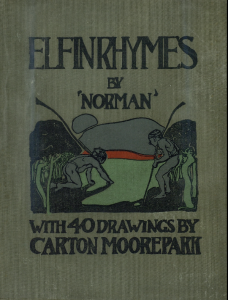 of children’s aesthetic sensibilities. We find precisely the opposite to be the case in the wonderful Elfin Rhymes from 1900, written by the mysterious “Norman” with “40 drawings by Carton Moorepark.” Whoever “Norman” may be (or why his one-word name appears in quotation marks), he gives his readers poems that might be mistaken at first glance for unpublished Christina Rossetti verses; and Mr. Moorepark’s illustrations rival those of the finest book illustrators of the time, presaging the high quality of Caldecott Medal-winning books of later decades. Elfin Rhymes seems like a rare oddity, likely published in a small print run; the care and attention of its layout and design shows a very high opinion of its readers’ imaginative capabilities.
of children’s aesthetic sensibilities. We find precisely the opposite to be the case in the wonderful Elfin Rhymes from 1900, written by the mysterious “Norman” with “40 drawings by Carton Moorepark.” Whoever “Norman” may be (or why his one-word name appears in quotation marks), he gives his readers poems that might be mistaken at first glance for unpublished Christina Rossetti verses; and Mr. Moorepark’s illustrations rival those of the finest book illustrators of the time, presaging the high quality of Caldecott Medal-winning books of later decades. Elfin Rhymes seems like a rare oddity, likely published in a small print run; the care and attention of its layout and design shows a very high opinion of its readers’ imaginative capabilities.
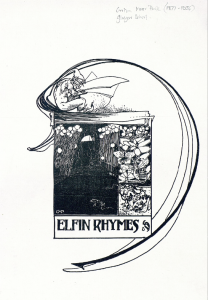 This title is representative of an emerging genre of late Victorian children’s literature, which still tended on the whole, as it does now, to fall into the trite and formulaic. Elfin Rhymes sits astride the fantasy boom at the turn of the century, heralded by hugely popular books like Frank L. Baum’s Wizard of Oz series and J.M. Barrie’s Peter Pan. These, the Harry Potters of their day, made millions of young people passionate readers of modern fairy tales, representing a slide even further away from the once quite narrow, “remorselessly instructional… or deeply pious” categories available in early writing for children, as Grenby points out.
This title is representative of an emerging genre of late Victorian children’s literature, which still tended on the whole, as it does now, to fall into the trite and formulaic. Elfin Rhymes sits astride the fantasy boom at the turn of the century, heralded by hugely popular books like Frank L. Baum’s Wizard of Oz series and J.M. Barrie’s Peter Pan. These, the Harry Potters of their day, made millions of young people passionate readers of modern fairy tales, representing a slide even further away from the once quite narrow, “remorselessly instructional… or deeply pious” categories available in early writing for children, as Grenby points out.
Where the boundaries for kids’ literature had once been  narrowly fixed by Latin grammar books and Pilgrim’s Progress, by the end of the 19th century, the influence of science fiction like Jules Verne’s, and of popular supernatural tales and poems, prepared the ground for comic books, YA dystopias, magician fiction, and dozens of other children’s literature genres we now take for granted, or—in increasingly large numbers—we buy to read for ourselves. Enter the Baldwin Library of Historical Children’s Literature here, where you can browse several categories, search for subjects, authors, titles, etc, see full-screen, zoomable images of book covers, download XML versions, and read all of the over 6,000 books in the collection with comfortable reader views. Find more classics in our collection, 800 Free eBooks for iPad, Kindle & Other Devices.
narrowly fixed by Latin grammar books and Pilgrim’s Progress, by the end of the 19th century, the influence of science fiction like Jules Verne’s, and of popular supernatural tales and poems, prepared the ground for comic books, YA dystopias, magician fiction, and dozens of other children’s literature genres we now take for granted, or—in increasingly large numbers—we buy to read for ourselves. Enter the Baldwin Library of Historical Children’s Literature here, where you can browse several categories, search for subjects, authors, titles, etc, see full-screen, zoomable images of book covers, download XML versions, and read all of the over 6,000 books in the collection with comfortable reader views. Find more classics in our collection, 800 Free eBooks for iPad, Kindle & Other Devices.
“Reprinted from Open Culture: The Best Free Cultural & Educational Media on the Web. Article by Josh Jones, August 30, 2016.”
Tip #3 for Nebraska Libraries on the Web
 Quick Tip #3: Publicize with Jetpack
Quick Tip #3: Publicize with Jetpack
If you’ve been working to add content to both your website and your social networks, there’s an easier way. In your Dashboard, there’s a section for the Jetpack plugin. Among Jetpack’s settings is the Publicize feature. Just click Configure and you’ll be able to connect your website to Facebook, Twitter, Tumblr, and more. Anything that you add to the site will be automatically pushed out to those social networks, so that your viewers will be able to see all of your announcements and photos, no matter which of your sites they’re using. Jetpack also includes sharing buttons that can be added to your posts, so that your readers can easily share your content on their own social networks.
Learn more about Nebraska Libraries on the Web in our previous Blog posts or contact Craig Lefteroff, or by phone at (402) 471-3106. For more information on the service or to view our current sites, please visit http://libraries.ne.gov/projectblog/.
Posted in Education & Training, General, Technology
Tagged free, Jetpack, Jetpack plugin, Library website, Social Media, technology, Tips, website design, WordPress
Leave a comment
Throwback Thursday: Interior photo of YMCA, Omaha, Nebraska
Posted in General, Nebraska Memories
1 Comment
What’s Sally Reading?
Spoilers for Award-Winning Books
One of the founders of the 5 Minute Librarian blog page noted in an email to YALSA-BK that she learned last fall that just in the YA genre alone, 5,000 books are published each year, and no one can read them all before the next year’s titles begin to pile up. So here is the solution, visit Spoilers, Sweetie! a new blog that spills the beans on award-winning titles for children and teens that you may not have time to read.
I appreciated that when you click on a category, say YALSA Nonfiction Award 2016, the title and author come up accompanied by a gray box. To read the spoiler just click on the box. This way you do not accidently uncover a spoiler you didn’t want to see. Readers of the blog are also invited to join the team and help provide spoilers for others.
Another portion of this web site has a chronological listing of book awards and when they are announced. Also handy information.
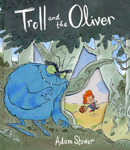 Troll and the Oliver by Adam Stower is a picture book for preschool through first grade. Every day, usually around noon, Troll tried to catch Oliver and eat him! Every day Oliver was too fast and agile and he always got away. One day Troll did not jump out to try to catch him. Oliver was very cautious on the way home. He decided Troll had given up and began to mix ingredients for cake. Then Troll jumped out of the cupboard and gulped down Oliver! He tasted terrible so Troll spit him out again. Luckily the timer dinged and out came cake! As it turns out trolls love cake so Oliver & Troll share the cake with each other. Clever—the world is a better place with trolls full of cake!
Troll and the Oliver by Adam Stower is a picture book for preschool through first grade. Every day, usually around noon, Troll tried to catch Oliver and eat him! Every day Oliver was too fast and agile and he always got away. One day Troll did not jump out to try to catch him. Oliver was very cautious on the way home. He decided Troll had given up and began to mix ingredients for cake. Then Troll jumped out of the cupboard and gulped down Oliver! He tasted terrible so Troll spit him out again. Luckily the timer dinged and out came cake! As it turns out trolls love cake so Oliver & Troll share the cake with each other. Clever—the world is a better place with trolls full of cake!
(The Nebraska Library Commission receives free copies of children’s and young adult books for review from a number of publishers. After review, the books are distributed free, via the Regional Library Systems, to Nebraska school and public libraries.)
Posted in Books & Reading, General, Youth Services
Leave a comment
Free Class: Health and Wellness @ the Library : The Essentials of Providing Consumer Health Services
 This fall you have two ways to take Health and Wellness @ the Library: The Essentials of Providing Consumer Health Services from NN/LM MCR staff.
This fall you have two ways to take Health and Wellness @ the Library: The Essentials of Providing Consumer Health Services from NN/LM MCR staff.
- 5 week online course for 12 MLA CE hours, September 7 – October 7, 2016
- 4 hour in-person NLA pre-conference for 4 MLA CE hours, October 19, 2016
Here’s the description for the NLA pre-conference:
Are you interested in starting or improving consumer health services in your library? Then this workshop is for you! We will define the core competencies of providing consumer health information services, and then dive directly into the essential skills and knowledge that library staff need to build those competencies. The class will begin with tools to learn the demographics and health status of people in your community. Together we will examine issues of literacy, health literacy, and the health information needs of special populations. From there we will explore authoritative resources for just about any type of health question, apps and mobile health technologies, how people are using social networking for health questions, and how to create fun and informative health-related programming for different populations in your community. Participants are encouraged to bring laptops or tablets for hands-on exercises. This course provides 4 CE credits towards the Consumer Health Information Specialization certificate.
For more information about the NLA pre-conference, visit http://www.nebraskalibraries.org/page/Neblib2016PreConf and look for “Health and Wellness @ the Library: The Essentials of Providing Consumer Health Services.” There is no additional registration fee for this pre-conference.
For more information about the 5 week online course, visit https://nnlm.gov/mcr/news_blog/2016/08/consumer-health-information-specializationmedical-library-association-ce-offering/. You do need to register, but there is no fee.
Christian Minter, christian.minter@unmc.edu
Annette Parde-Maass, AnnetteParde-Maass@creighton.edu
Education and Outreach Coordinators
National Network of Libraries of Medicine
Check out the Bringing Health Information to the Community (BHIC) Blog, http://nnlm.gov/bhic/
Free Webinar : Resources for Addressing Community Health Needs
 Resources for Addressing Community Health Needs
Resources for Addressing Community Health Needs
August 24, 2016 1:00 pm MT/ 2:00 pm CT, https://webmeeting.nih.gov/mcr2
Presenter: Dana Abbey, Community Engagement Coordinator, NN/LM MCR
There are numerous factors that have the potential to influence the health of your community members including quality of life, health behaviors, utilization of and access to health care, social and economic factors, and the physical environment.
In this hands-on session you will:
- Utilize tools for researching these factors at the local level.
- Identify authoritative health information resources for program planning.
- Identify potential community partners.
Who should attend?
- Public libraries and community organizations planning health outreach activities.
- K-12 staff involved in student health care and/or health and science curriculums (librarians, nurses, teachers).
- Public health grant writers.
- Anyone who interested in knowing about these great resources.
No registration is required. MLA CE credit is available upon completion of webinar evaluation.
Christian Minter, christian.minter@unmc.edu
Annette Parde-Maass, AnnetteParde-Maass@creighton.edu
Education and Outreach Coordinators
National Network of Libraries of Medicine,
Midcontinental Region
Check out the Bringing Health Information to the Community (BHIC) Blog, http://nnlm.gov/bhic/
National Library of Medicine New Director
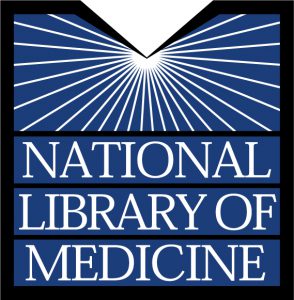 On September 12, 2016, Dr. Patricia Flatley Brennan will be sworn in as the new Director of the National Library of Medicine (NLM). You can read about Dr. Brennan’s credentials and accomplishments and watch a video about her vision for the NLM on the NLM in Focus blog. The 3-minute video highlights a number of roles the NLM plays in advancing health, many of which can be extrapolated to apply to local libraries as well. As Dr. Brennan states, “We’re going to have a new understanding of what is health…and the Library will be at the center of making sure that’s accessible and understandable.”
On September 12, 2016, Dr. Patricia Flatley Brennan will be sworn in as the new Director of the National Library of Medicine (NLM). You can read about Dr. Brennan’s credentials and accomplishments and watch a video about her vision for the NLM on the NLM in Focus blog. The 3-minute video highlights a number of roles the NLM plays in advancing health, many of which can be extrapolated to apply to local libraries as well. As Dr. Brennan states, “We’re going to have a new understanding of what is health…and the Library will be at the center of making sure that’s accessible and understandable.”
~Annette Parde-Maass
Education and Outreach Coordinator
National Network of Libraries of Medicine MidContinental Region
https://nnlm.gov/mcr
Tip #2 for Nebraska Libraries on the Web
Quick Tip #2: Create a page that points directly to another website
When you add a new page to your site (by going to Pages -> Add New), WordPress assumes that you’re creating a new standalone page to add to your site. But you can also create an empty “placeholder” page that will send visitors out to another website—say, your Facebook page or the website for your town or county. To do this, simply scroll down to the bottom of the screen and, in the Page Links To section, choose A Custom URL. Once you have your new “page” created, you can easily add it to your site’s menu!
Learn more about Nebraska Libraries on the Web in our previous Blog posts or contact Craig Lefteroff, or by phone at (402) 471-3106. For more information on the service or to view our current sites, please visit http://libraries.ne.gov/projectblog/.
Posted in Education & Training, General, Technology
Tagged free, Library, Nebraska Libraries on the Web, technology, Tips, website design, WordPress
Leave a comment
Friday Reads : The Little Paris Bookshop
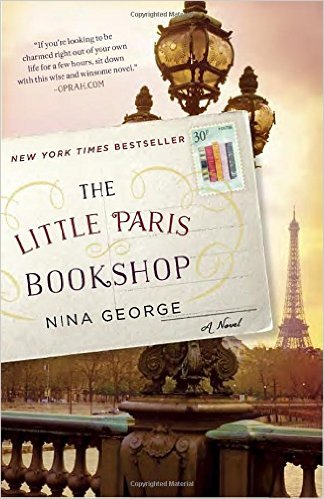 “Monsieur Perdu calls himself a literary apothecary. From his floating bookstore in a barge on the Seine, he prescribes novels for the hardships of life. Using his intuitive feel for the exact book a reader needs, Perdu mends broken hearts and souls. The only person he can’t seem to heal through literature is himself; he’s still haunted by heartbreak after his great love disappeared. She left him with only a letter, which he has never opened.
“Monsieur Perdu calls himself a literary apothecary. From his floating bookstore in a barge on the Seine, he prescribes novels for the hardships of life. Using his intuitive feel for the exact book a reader needs, Perdu mends broken hearts and souls. The only person he can’t seem to heal through literature is himself; he’s still haunted by heartbreak after his great love disappeared. She left him with only a letter, which he has never opened.
After Perdu is finally tempted to read the letter, he hauls anchor and departs on a mission to the south of France, hoping to make peace with his loss and discover the end of the story. Joined by a bestselling but blocked author and a lovelorn Italian chef, Perdu travels along the country’s rivers, dispensing his wisdom and his books, showing that the literary world can take the human soul on a journey to heal itself.
Internationally bestselling and filled with warmth and adventure, The Little Paris Bookshop by Nina George is a love letter to books,” a masterpiece of character description, and “meant for anyone who believes in the power of stories to shape people’s lives.”
Reprinted from Amazon.
Posted in Books & Reading, General, Information Resources, Library Management, Programming, Uncategorized
Tagged Friday Reads
Leave a comment
Get Your Library Ready for the Total Solar Eclipse — August 21, 2017
 Are you ready for the celestial event of the century? In just over a year from now (August 21, 2017), the shadow of the moon will sweep across the United States from the Pacific Ocean to the Atlantic Ocean in a spectacle that hasn’t occurred in 99 years! The National Center for Interactive Learning (NCIL) at the Space Science Institute has recently been awarded a grant for its NASA@ My Library program. Partners include NASA, ALA, The Girl Scouts, SETI, and many other organizations. The STAR Library Education Network (STAR_Net) is managed by NCIL. The STAR_Net team wants to work with your library and thousands of others to participate in this national event. Some fortunate libraries will be able to experience a total solar eclipse though every library in the country will observe at least a partial eclipse.
Are you ready for the celestial event of the century? In just over a year from now (August 21, 2017), the shadow of the moon will sweep across the United States from the Pacific Ocean to the Atlantic Ocean in a spectacle that hasn’t occurred in 99 years! The National Center for Interactive Learning (NCIL) at the Space Science Institute has recently been awarded a grant for its NASA@ My Library program. Partners include NASA, ALA, The Girl Scouts, SETI, and many other organizations. The STAR Library Education Network (STAR_Net) is managed by NCIL. The STAR_Net team wants to work with your library and thousands of others to participate in this national event. Some fortunate libraries will be able to experience a total solar eclipse though every library in the country will observe at least a partial eclipse.
So jump on the eclipse train!
Go to: Eclipse Registration to register your library.
We will, in turn, let you know how to access the following valuable resources:
· Vetted Multimedia for Programming/Promotion (Images, Video, Animations, Artwork)
· Media Template Package (Press Release, PSA, Community Letter, Media Alert)
· Private Eclipse Forum (registered libraries)
· Inclusion in Special Eclipse Promotions (Social Media, Blogs, Newsletters, etc.)
· Enrollment in STAR_Net’s Eclipse Newsletter
When your eclipse event is planned, you can share your press release, flyer, website link, or like material with us to receive 50 free Solar Shades for your patrons to watch along with us! (shades are available on a first come, first serve basis).
The STAR Library Education Network (STAR_Net) is supported by a grant from the National Science Foundation and other funders. STAR stands for Science-Technology Activities and Resources. This ground-breaking program includes a traveling STEM exhibition program, the development of STEM activities for public libraries, a comprehensive training program that includes in-person workshops and webinars, the development of the STAR_Net Online Community, and a research and evaluation program. STAR_Net is led by the Space Science Institute’s National Center for Interactive Learning. Partners include the American Library Association, Lunar and Planetary Institute, and the Afterschool Alliance along with many other organizations.
Posted in Books & Reading, Education & Training, General, Information Resources, Library Management, Programming, Uncategorized, What's Up Doc / Govdocs
Tagged 2017 Solar Eclipse Library Programing, free, Library Programing, Nebraska, public Library, Solar Eclipse, Total Eclipse 2017
Leave a comment
Throwback Thursday: Nebraska State Penitentiary
Picture postcard of the exterior of the Nebraska State Penitentiary. Written on the postcard is Dinner Hour at the Nebraska Penitentiary. Approximate date is early 1900’s.
Posted in General, Nebraska Memories
2 Comments
